Association of traditional Chinese exercises with glycemic responses in people with type 2 diabetes:A systematic review and meta-analysis of randomized controlled trials
Ge Song,Chngcheng Chen,Jun Zhng,Lin Chng,Dong Zhu,Xueqing Wng,*
aDepartment of Sports Rehabilitation,Shanghai University of Sport,Shanghai 200438,China
bSchool of Wushu,Shanghai University of Sport,Shanghai 200438,China
Abstract Background:There is increasing evidence showing the health benefits of various forms of traditional Chinese exercises(TCEs)on the glycemic profile in people with type 2 diabetes.However,relatively little is known about the combined clinical effectiveness of these traditional exercises.This study was designed to perform a systematic review and meta-analysis of the overall effect of 3 common TCEs(Tai Ji Quan,Qigong,Ba Duan Jin)on glycemic control in adults with type 2 diabetes.Methods:We conducted an extensive database search in Cochrane Library,EMBASE,PubMed,Web of Science,EBSCO,and China National Knowledge Infrastructure on randomized controlled trials published between April 1967 and September 2017 that compared any of the 3 TCEs with a control or comparison group on glycemic control.Data extraction was performed by 2 independent reviewers.Study quality was evaluated using the Cochrane Handbook for Systematic Reviews of Interventions,which assessed the risk of bias,including sequence generation,allocation concealment,blinding,completeness of outcome data,and selective outcome reporting.The resulting quality of the reviewed studies was characterized in 3 grades representing the level of bias:low,unclear,and high.All analyses were performed using random effects models and heterogeneity was quantified.We a priori specified changes in biomarkers of hemoglobin A1c(in percentage)and fasting blood glucose(mmol/L)as the main outcomes and triglycerides,total cholesterol,low-density lipoprotein cholesterol,high-density lipoprotein-cholesterol,2-h plasma glucose,and fasting plasma glucose as secondary outcomes.Results:A total of 39 randomized,controlled trials(Tai Ji Quan=11;Qigong=6;Ba Duan Jin=22)with 2917 type 2 diabetic patients(aged 41-80 years)were identified.Compared with a control or comparison group,pooled meta-analyses of TCEs showed a significant decrease in hemoglobin A1c(mean difference(MD)=-0.67%;95%confidence interval(CI):-0.86%to-0.48%;p<0.00001)and fasting blood glucose(MD=-0.66 mmol/L;95%CI:-0.95 to-0.37 mmol/L;p<0.0001).The observed effect was more pronounced for interventions that were medium range in duration(i.e.,>3-<12 months).TCE interventions also showed improvements in the secondary outcome measures.A high risk of bias was observed in the areas of blinding(i.e.,study participants and personnel,and outcome assessment).Conclusion:Among patients with type 2 diabetes,TCEs were associated with significantly lower hemoglobin A1c and fasting blood glucose.Further studies to better understand the dose and duration of exposure to TCEs are warranted.
Keywords:Blood glucose;Hypoglycemia;Insulin sensitivity;Physical activity

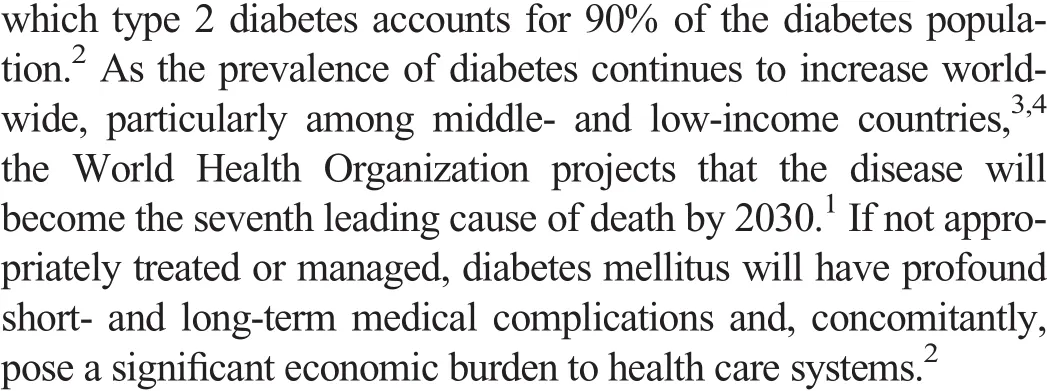
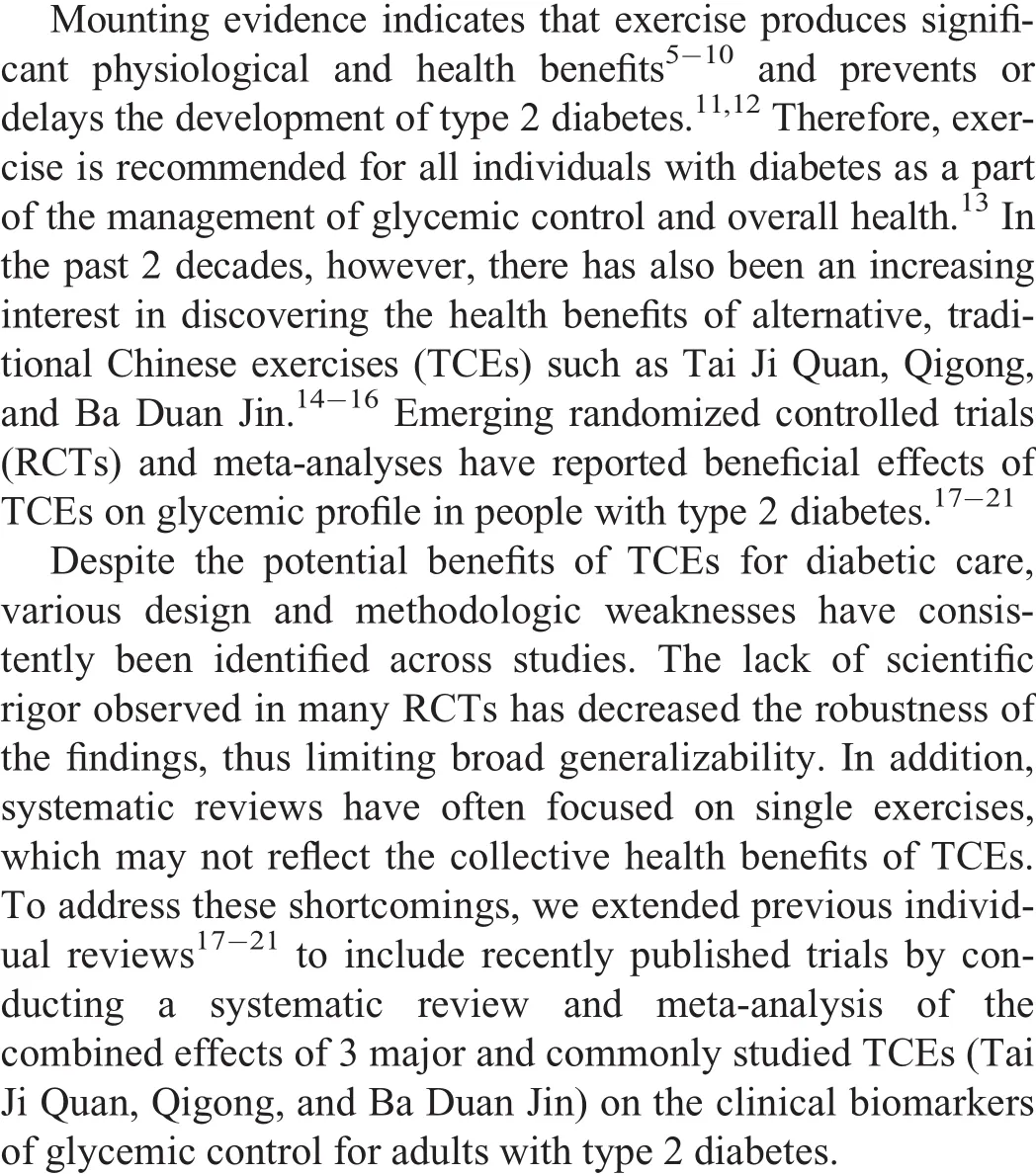
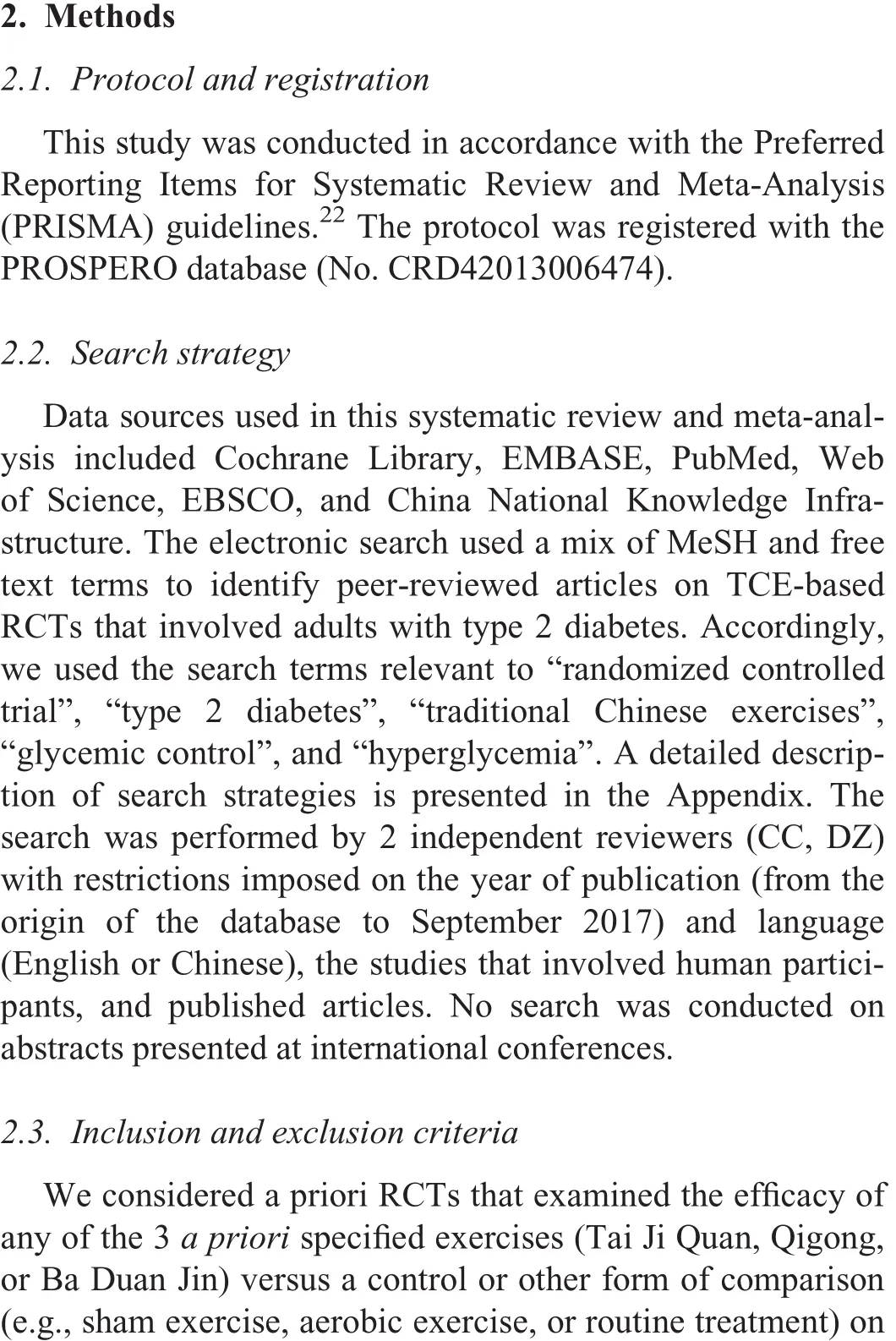




Fig.1.Flow chart of study selection.CNKI=China National Knowledge Infrastructure.
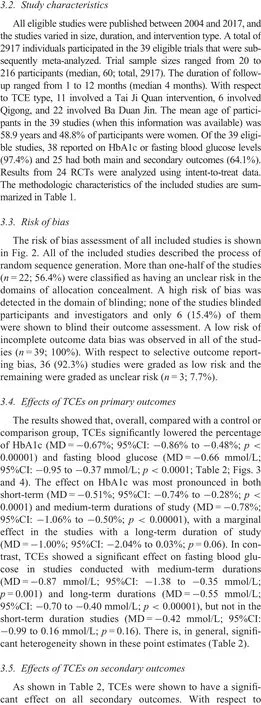
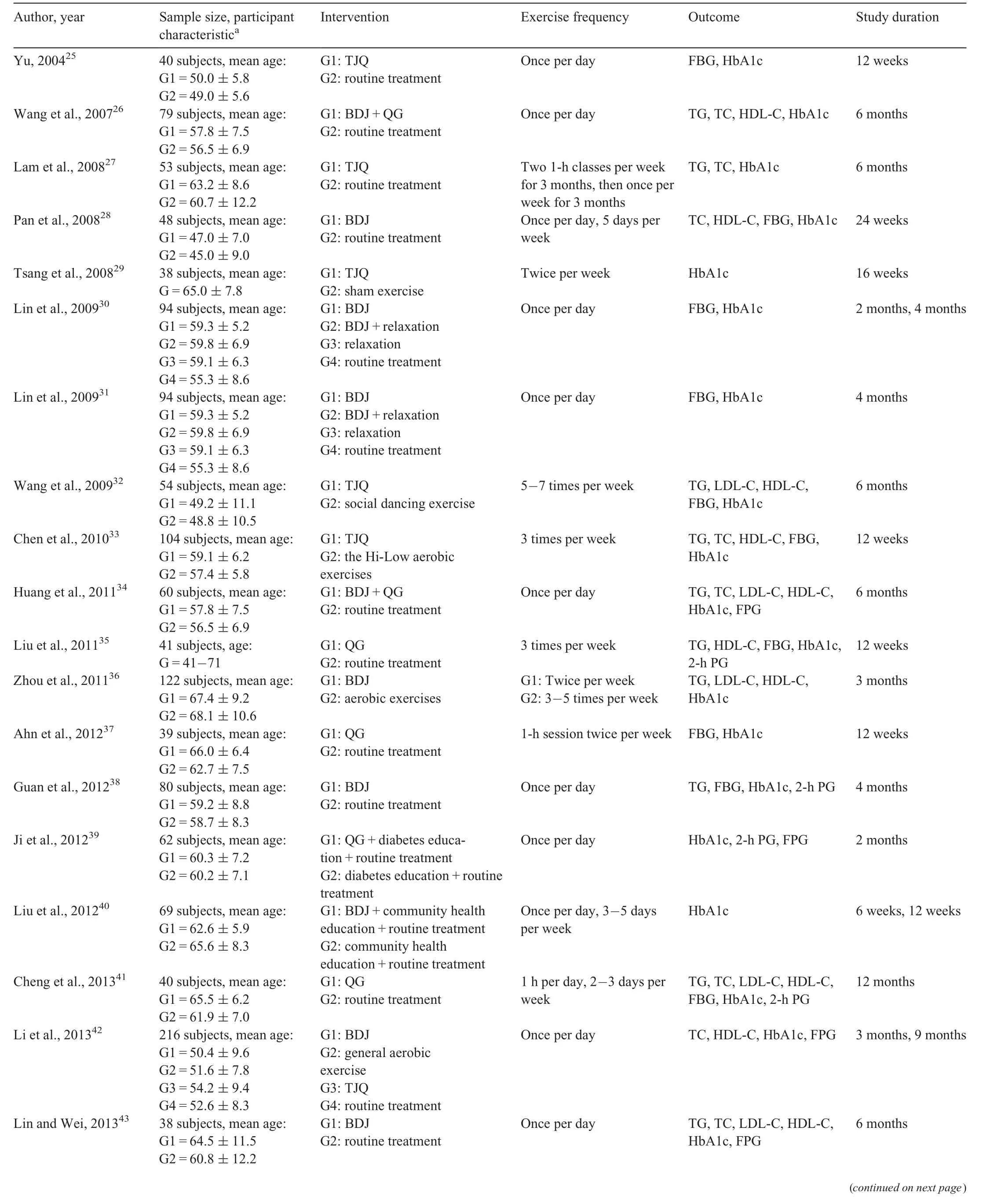
Table 1 Characteristics of study design,intervention,and participants.
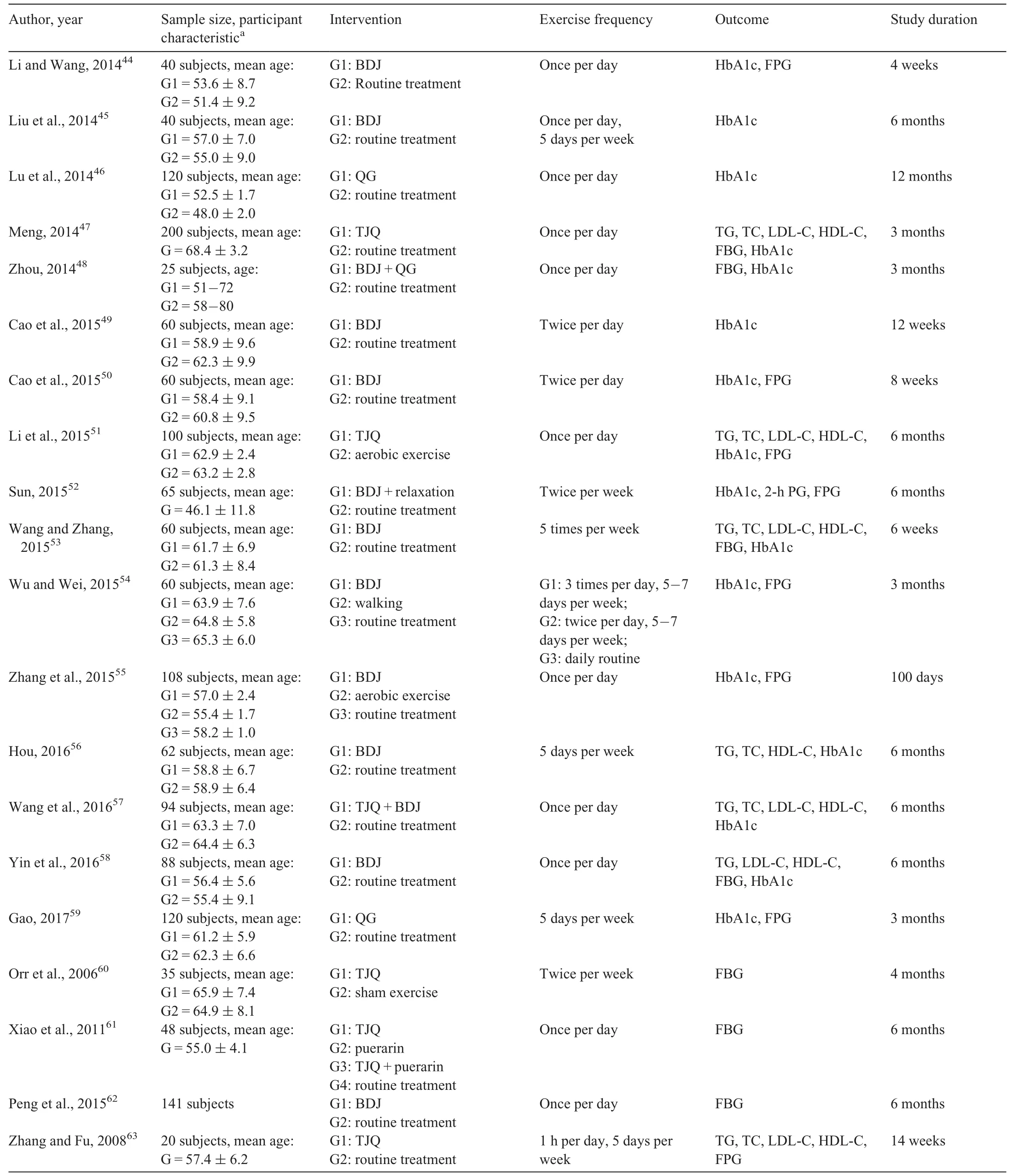
Table 1(Continued)
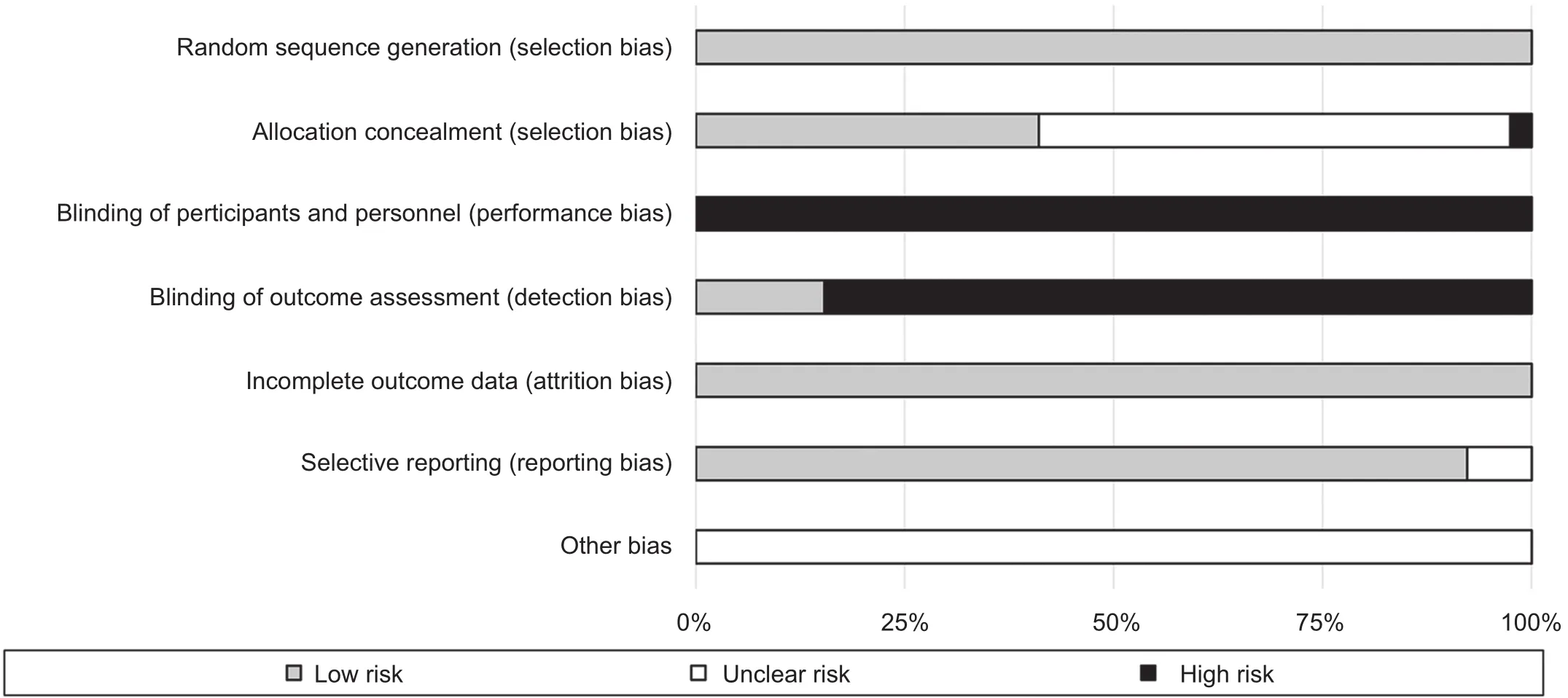
Fig.2.Risk of bias assessment.


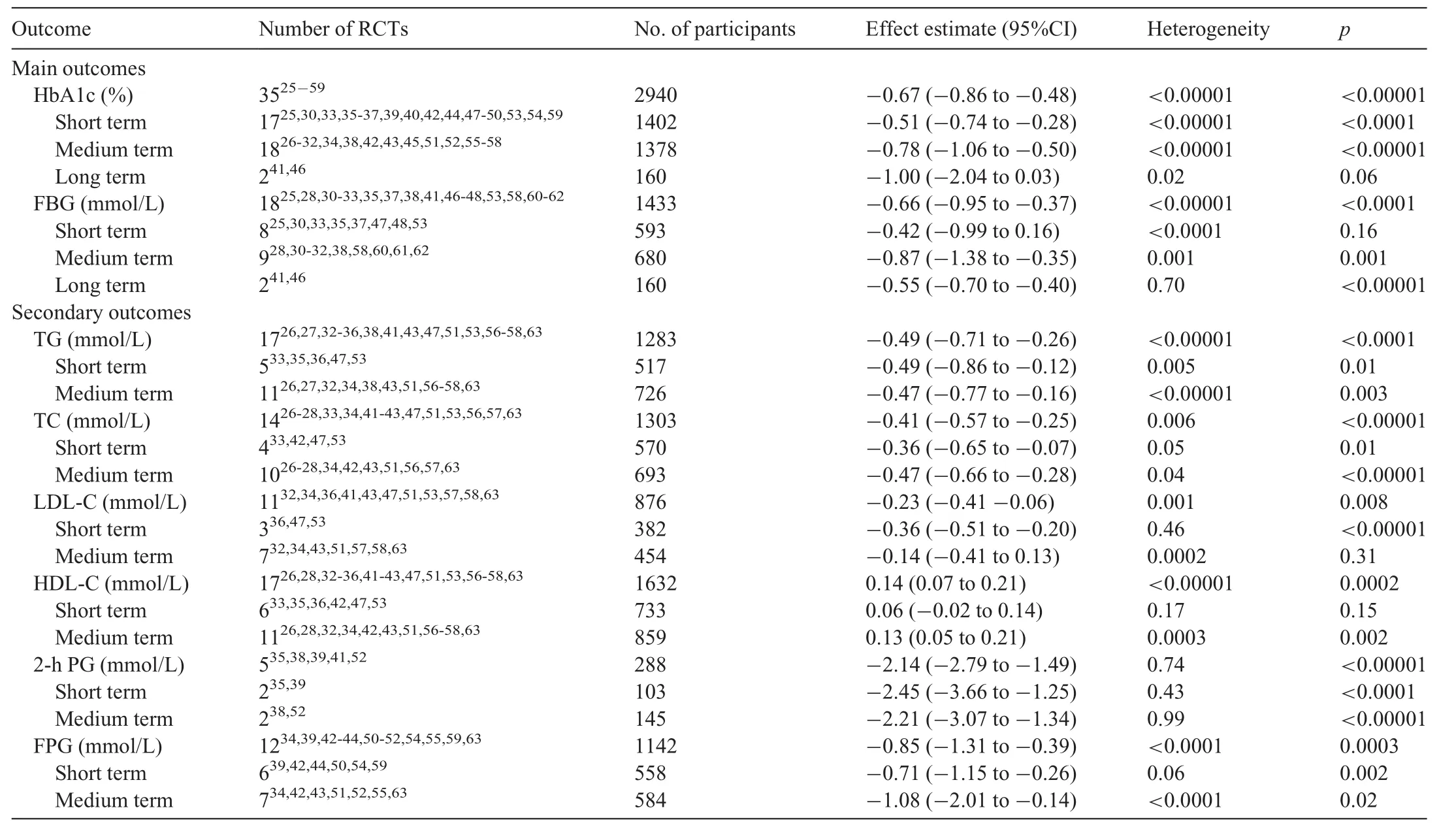
Table 2 Summary of the meta-analysis results by study length.

Fig.3.Forest plot on hemoglobin A1c outcome in randomized,controlled trials with short-,medium-,and long-term durations.Forest plot showing the mean difference in change in hemoglobin A1c between TCEs and control/comparison groups across the studies that were conducted in short-,medium-,and long-term durations.CI=confidence interval;IV=inverse variance;SD=standard deviation;TCE=traditional Chinese exercise.


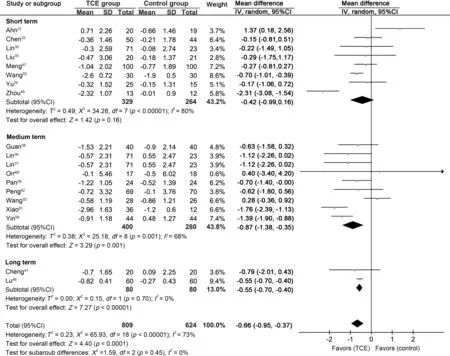
Fig.4.Forest plot on fasting blood glucose outcome in randomized,controlled trials with short-,medium-,and long-term durations.Forest plot showing the mean difference in change in fasting blood glucose between TCEs and control/comparison groups across the studies that were conducted in short-,medium-,and longterm durations.CI=confidence interval;IV=inverse variance;SD=standard deviation;TCE=traditional Chinese exercise.
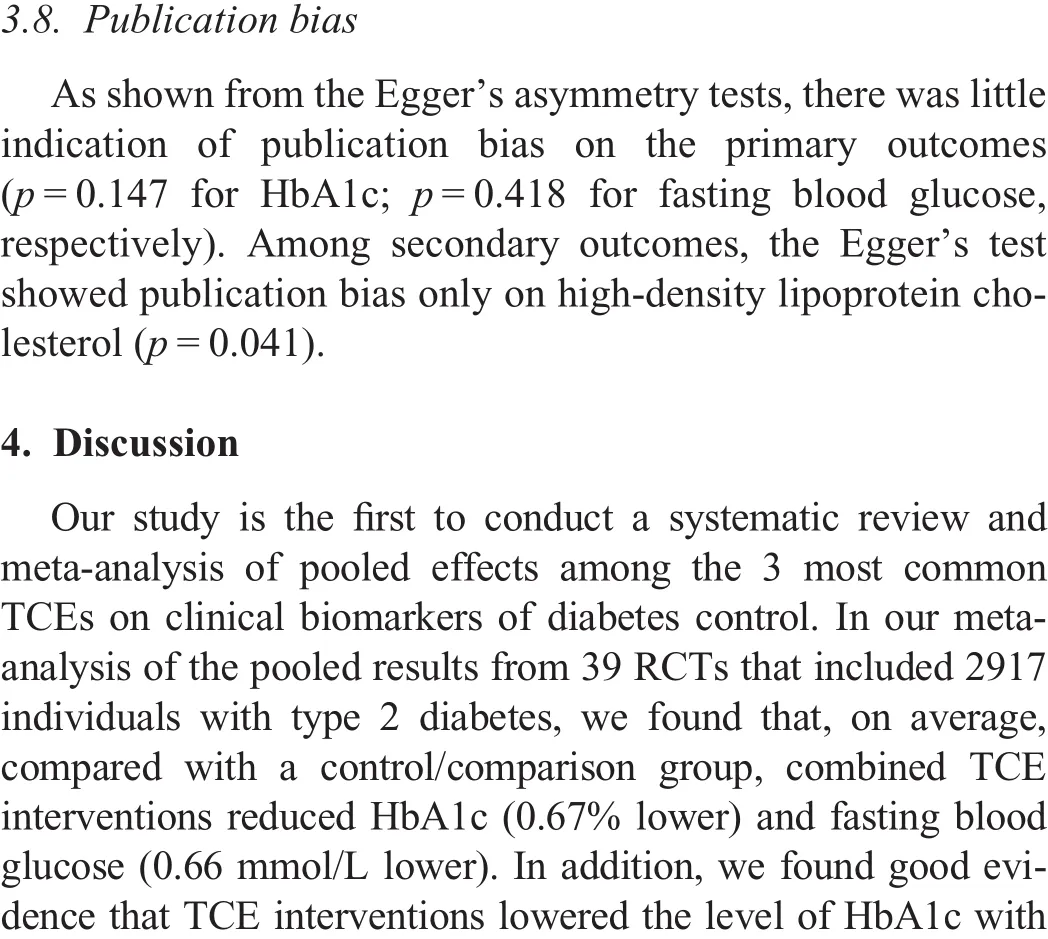

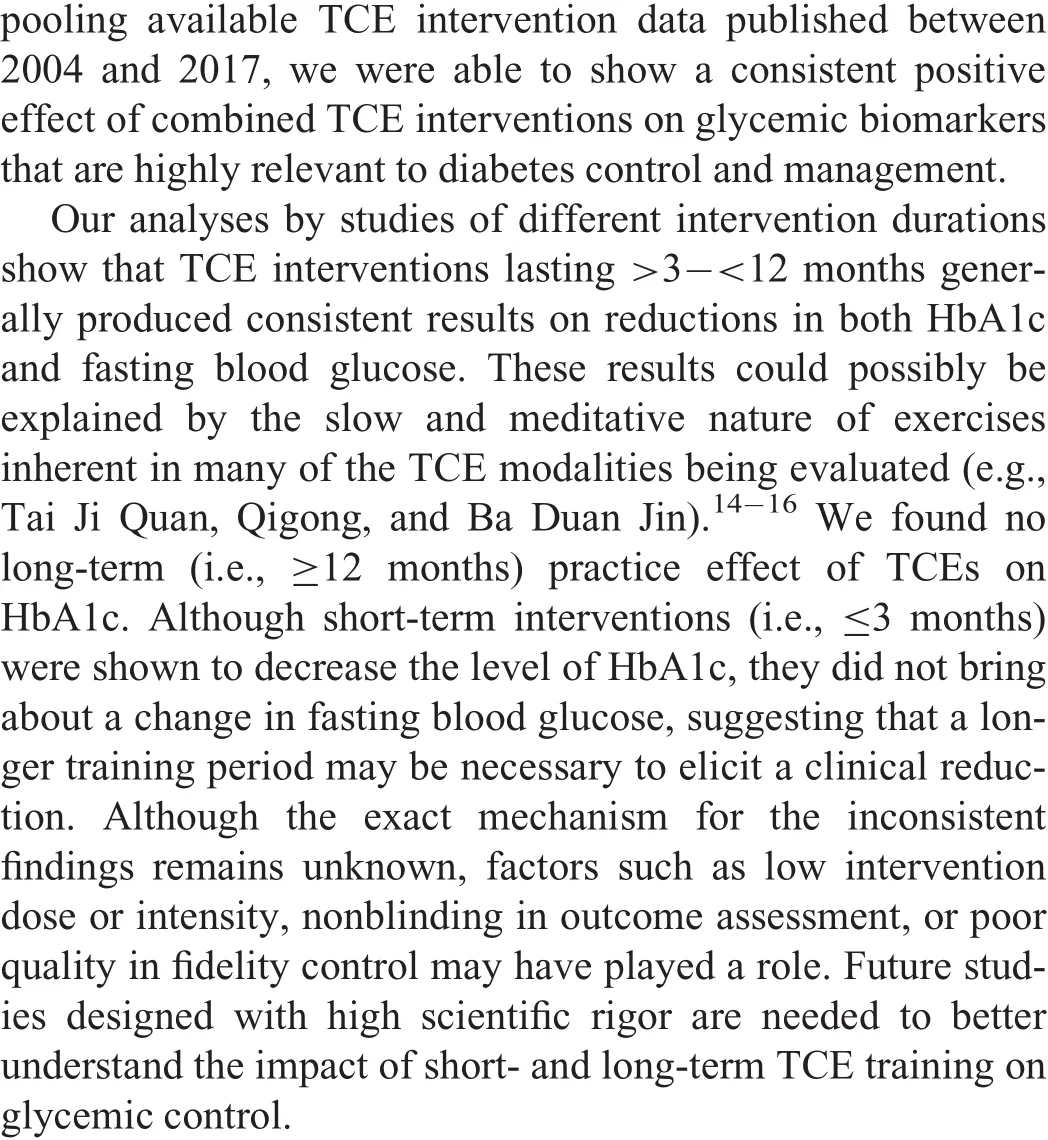



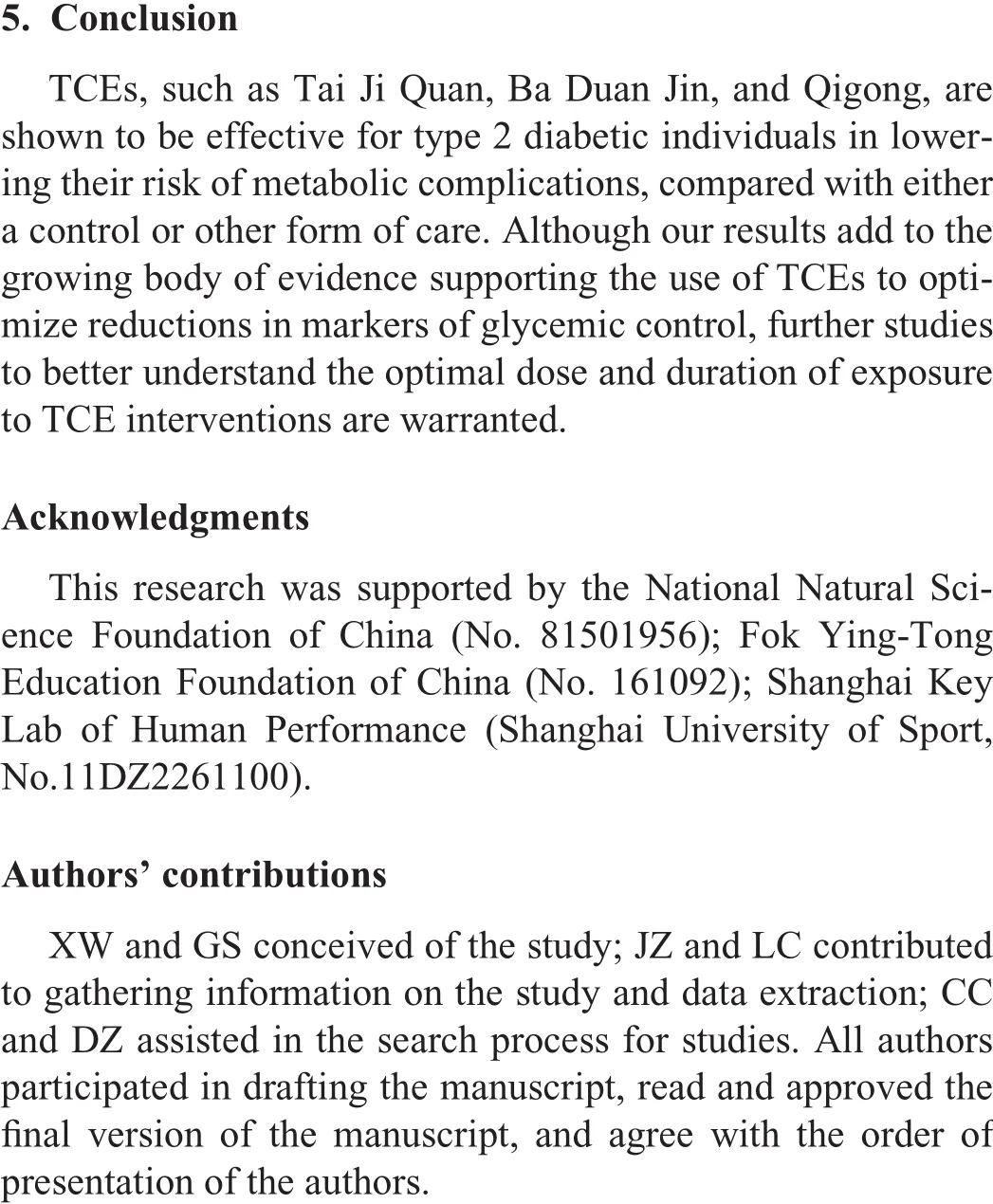




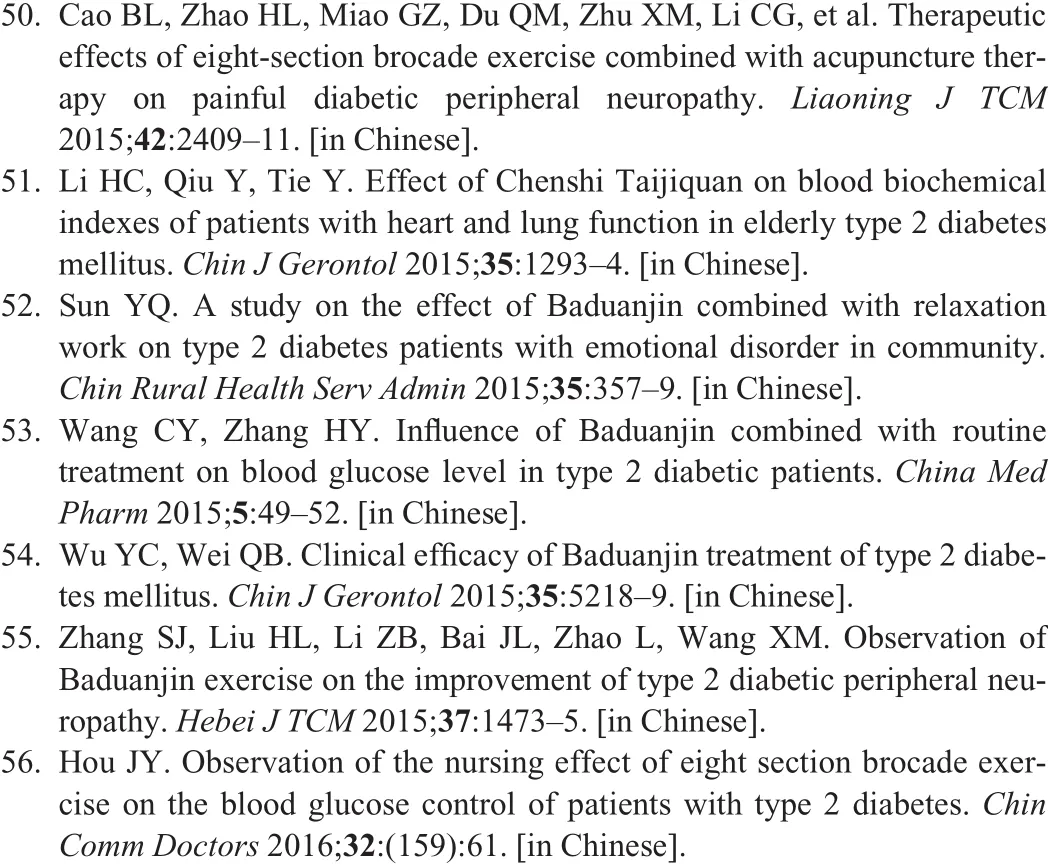
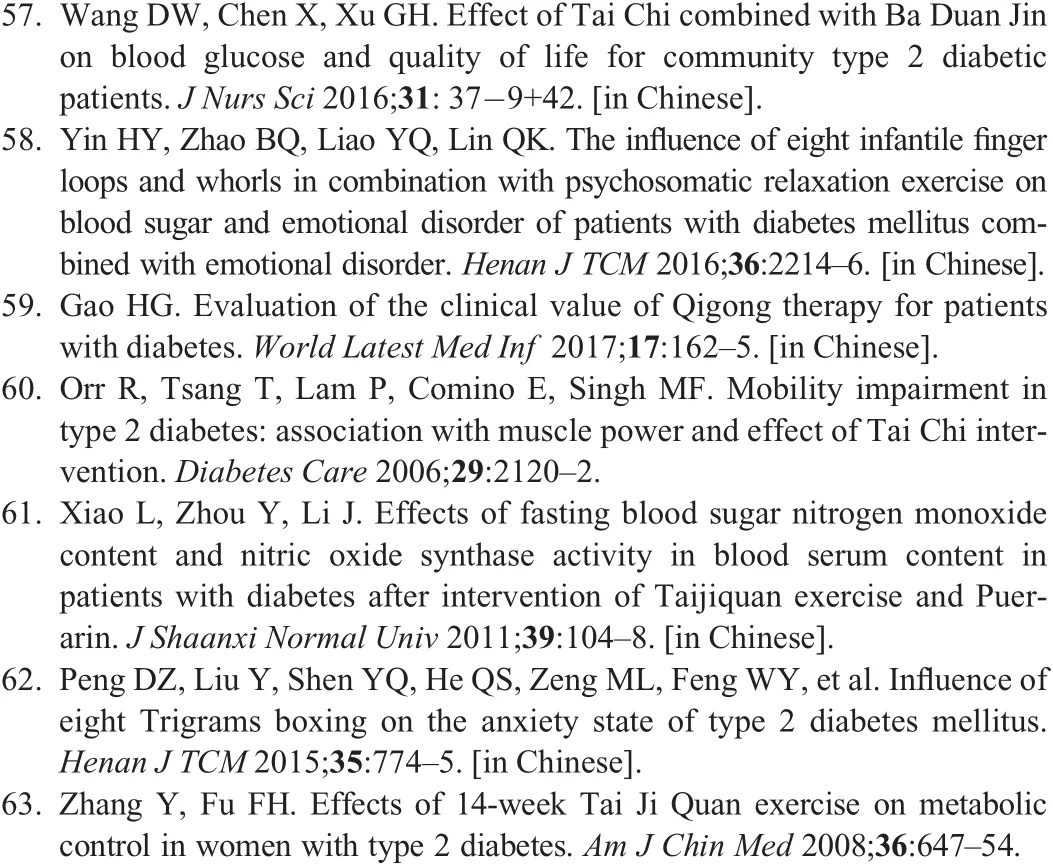
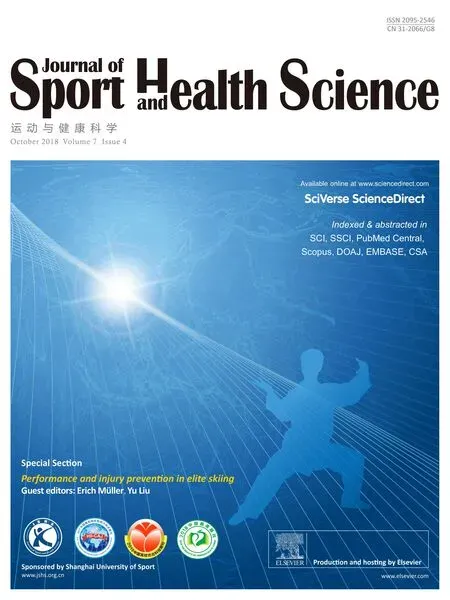 Journal of Sport and Health Science2018年4期
Journal of Sport and Health Science2018年4期
- Journal of Sport and Health Science的其它文章
- Sport participation and vigilance in children:In fluence of different sport expertise
- Pacing and predictors of performance during cross-country skiing races:A systematic review
- he in fluence of physiobiomechanical parameters,technical aspects of shooting,and psychophysiological factors on biathlon performance:A review
- Limb symmetry index in competitive alpine ski racers:Reference values and injury risk identification according to age-related performance levels
- A comparison of lower limb stiffness and mechanical muscle function in ACL-reconstructed,elite,and adolescent alpine ski racers/ski cross athletes
- he BRICS Council for Exercise and Sport Science(BRICSCESS)—A new era has dawned
